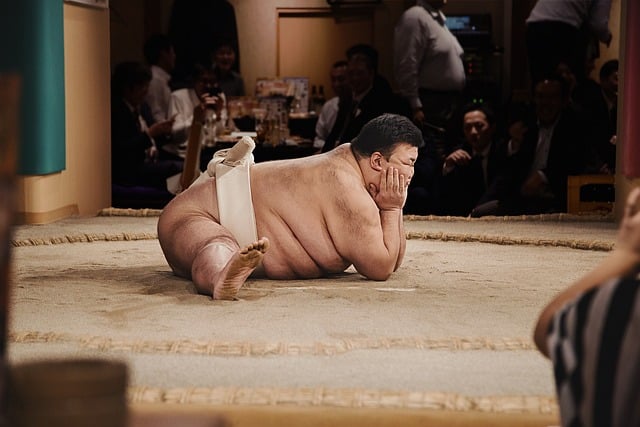This text presents a comprehensive comparison of non-surgical fat reduction methods, focusing on CoolSculpting and liposuction. It explains their differing techniques—cryolipolysis for CoolSculpting versus physical suction for liposuction—and highlights the advantages of non-invasiveness in CoolSculpting, including quick recovery and minimal downtime. Meanwhile, liposuction offers precise results but with potential risks like bruising and swelling. The analysis weighs these factors to help individuals make informed choices between these two popular fat reduction options based on their unique needs and preferences.
Looking to achieve a slimmer figure without surgery? Explore the world of non-surgical fat reduction with CoolSculpting and Liposuction. This comprehensive guide offers an in-depth comparison, delving into the freezing approach of CoolSculpting versus the surgical and non-invasive procedures of Liposuction. Understand the recovery processes, weigh potential benefits and drawbacks, and discover key factors to help you choose the ideal option for your body transformation journey.
Understanding Non-Surgical Fat Reduction: An Overview

Non-surgical fat reduction is a growing trend in cosmetic procedures, offering an alternative to invasive options like liposuction. This method leverages technology to target and eliminate fat cells without incisions or extensive recovery periods. Two popular non-surgical treatments are CoolSculpting and Liposuction, each with its unique approach.
CoolSculpting utilizes cryolipolysis, a process that freezes fat cells, causing them to break down and be naturally eliminated by the body over time. On the other hand, liposuction physically removes fat through suction, making it a more aggressive procedure. When comparing these two, understanding their distinct mechanisms is key. A non-surgical fat reduction comparison reveals varied outcomes, recovery times, and patient suitability, allowing individuals to make informed choices based on their needs and preferences.
CoolSculpting: The Freezing Approach to Fat Loss

CoolSculpting represents a non-surgical approach to fat reduction, utilizing cryolipolysis—the controlled freezing of fat cells. This innovative technique is designed to eliminate stubborn fat areas without surgery or downtime. During the procedure, a specialized device applies cooling technology directly to targeted fat pockets, freezing and crystallizing fat cells while leaving surrounding tissues unharmed.
Compared to surgical options like liposuction, CoolSculpting offers several advantages. It’s non-invasive, meaning there’s no cutting or incisions involved, which translates to less pain and faster recovery. Patients can typically resume their normal activities immediately after the procedure. Additionally, CoolSculpting has a lower risk of complications and doesn’t require an extended period of healing, making it an attractive choice for those seeking a more gentle yet effective fat-reduction method.
Liposuction: Surgical vs. Non-Invasive Procedures

Liposuction is a popular choice for those seeking fat reduction, but it’s important to understand the distinction between surgical and non-invasive procedures. Traditional liposuction involves making incisions and using a suction device to remove targeted fat cells, requiring anesthesia and often resulting in some downtime. This surgical method may leave scars and carries risks associated with any surgery, including infection and bleeding.
In contrast, non-surgical fat reduction treatments, like CoolSculpting, offer a more gentle approach. It uses controlled cooling to freeze and kill fat cells without incisions or anesthesia. As the body naturally processes and eliminates these cells, it leads to inch loss and improved contour. This method is generally considered safer with minimal side effects and no recovery time, making it an attractive alternative for those seeking a non-surgical solution for fat reduction compared to traditional liposuction.
Recovery Process: CoolSculpting vs. Liposuction Comparison

The recovery process is a key factor in understanding the differences between CoolSculpting and liposuction, both popular non-surgical fat reduction procedures. CoolSculpting involves using cryolipolysis to freeze and eliminate targeted fat cells, requiring no incisions or anaesthesia. Patients can usually resume their normal activities within a few days with minimal discomfort. Swelling and bruising are common but temporary, and most people experience little to no downtime.
In contrast, liposuction is a surgical procedure that physically removes fat from specific areas using a suction device. Recovery takes longer due to the invasive nature of the operation. Patients typically need several weeks for complete healing, during which they must follow strict post-operative care instructions. Discomfort, swelling, and bruising are more pronounced with liposuction compared to CoolSculpting. However, it offers more precise results in targeted fat reduction.
Potential Benefits and Drawbacks of Each Method

Potential Benefits and Drawbacks of Each Method
When it comes to non-surgical fat reduction, CoolSculpting and liposuction each offer unique advantages. CoolSculpting, a groundbreaking technology that uses controlled cooling to freeze and eliminate fat cells, stands out for its non-invasive nature, minimal downtime, and consistent results. It’s ideal for those seeking a gentle approach without surgical risks or recovery periods. However, individuals might experience temporary discomfort during the procedure, and results may vary based on the area treated and individual factors.
Liposuction, while surgically invasive, provides immediate and dramatic outcomes. This method physically suctions fat cells from targeted areas, ensuring precise control over the treatment. Despite its effectiveness, liposuction carries risks like any surgery, including bruising, swelling, and potential complications. It requires a recovery period, usually involving mild to moderate pain and restrictions on physical activity. Still, for many, these temporary drawbacks are outweighed by the permanent results and improved body contouring it offers.
Factors to Consider When Choosing Your Ideal Option

When considering between CoolSculpting and Liposuction for non-surgical fat reduction, several factors come into play. Both procedures offer effective ways to target stubborn fat areas, but they differ in approach and recovery times. CoolSculpting, a popular choice, uses cryolipolysis to freeze and eliminate fat cells, making it appealing for those seeking minimal downtime. On the other hand, Liposuction involves suction and extraction, often requiring small incisions and potentially longer recovery periods compared to CoolSculpting.
In terms of side effects and discomfort, understanding the unique aspects of each procedure is crucial. CoolSculpting generally has fewer immediate risks and may be more suitable for individuals with less severe fat deposits. Liposuction, while offering precise results, carries slight bleeding and swelling risks and typically leaves small scars, which might be a consideration for aesthetic preferences. The decision should also factor in lifestyle changes, as both procedures complement healthy habits for long-term maintenance of results.
